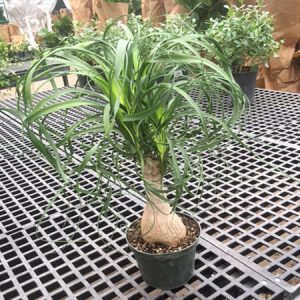Description
Sarracenia – Pitcher Plant –
There are 9-13 evergreen or deciduous insectivorous perennials, in the Sarraceniaceae family, in this genus. They are found naturally occurring in acidic, nutrient-deficient bogs or somewhat drier areas, from the Canadian Arctic to Florida, in North America. From short thick rhizomes, it produces sparse, wiry roots and rosettes of phyllodes, some or all of which are changed into nectar-secreting, insect-catching pitchers. The mostly vertical, sometimes horizontal, variously marked pitchers, 2-36″ long, have lateral wings and hooked lids that forms a sort of umbrella that shelters the stamens. In spring, solitary, nodding or pendent, more or less cup shaped flowers, are usually purple-red or greenish yellow or a bend of these colors, with 4 or 5 sepals and 5 petals, are borne above the pitchers. Grow outdoor, where temperatures don’t fall below 23 degree Fahrenheit, in a damp shaded peat bed or bog garden.
Grow in humus rich, wet, acidic soil in full sun. Water often. Divide in spring. Prone to scale insects, mealybugs, aphids, and tortix moth caterpillars.
S. purpurea subsp. venosa – Common Pitcher Plant – Huntsman’s Cup – Indian Cup – Sweet Pitcher Plant – This very variable perennial that grows 4-6″ tall and 3′ feet wide. It bears nearly horizontal, more inflated, rough, green to purple pitchers, 2-20″ long, with up-curved ends, broad wings, and erect, wavy edged, often glossy, broad lids that extend beyond the mouths. Flowers, are purple or rose pink, to 2″ across, are borne in spring.
Zones 2-9





